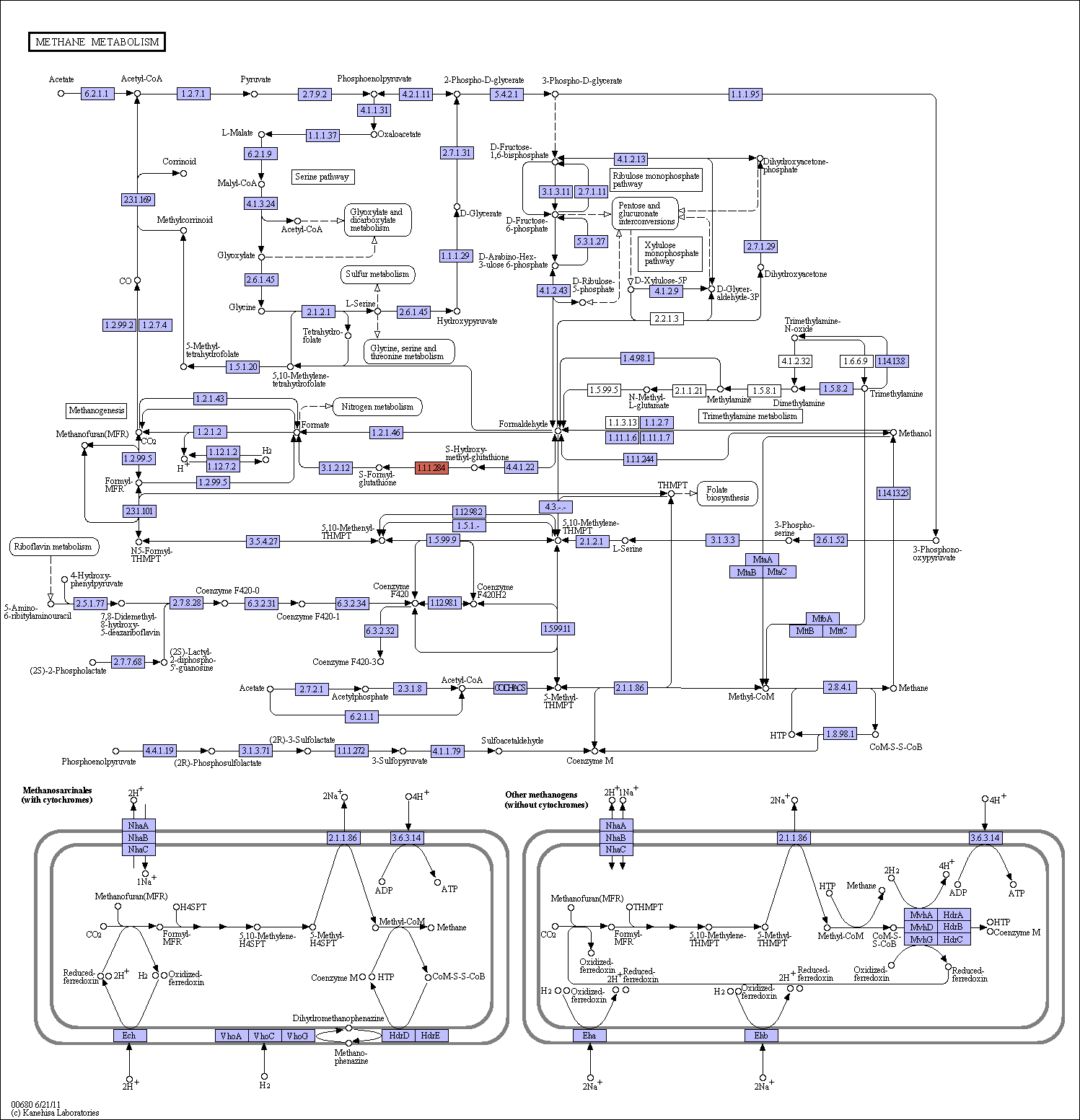|
Methane is metabolized principally by methanotrophs and the methanogens in the global carbon cycle. Methanotrophs consume methane as the only source of carbon, while methanogens produce methane as a metabolic byproduct. Methylotrophs, which are microorganisms that can obtain energy for growth by oxidizing one-carbon compounds, such as methanol and methane, are situated between methanotrophs and methanogens. In this map, formaldehyde is placed at the diverging point for further oxidation to CO2 for energy source and assimilation for biosynthesis in methanotrophs and methyltrophs. There are three pathways that convert formaldehyde to C2 or C3 compounds: serine pathway [MD:M00346], ribulose monophosphate pathway [MD:M00345], and xylulose monophosphate pathway [MD:M00344]. The first two pathways are found in prokaryotes and the third is found in yeast. As a special case of methylotrophs, various amines can be used as carbon sources in trimethylamine metabolism. In contrast, methanogens can obtain energy for growth by converting a limited number of substrates to methane under anaerobic conditions. Only three types of methanogenic pathways are known: methanogenesis from H2/CO2 or formate [MD:M00347], methanol to methane [MD:M00356], and acetate to methane [MD:M00357]. Methanogens use 2-mercaptoethanesulfonate (CoM; coenzyme M) as the terminal methyl carrier in methanogenesis and have four enzymes for CoM biosynthesis [MD:M00358]. Coenzyme B-Coenzyme M heterodisulfide reductase (Hdr), requiring for the final reaction steps of methanogenic pathway, is divided into two types: cytoplasmic HdrABC in most methanogens and membrane-bound HdrED in Methanosarcina species. |
 Methane metabolism - Reference pathway (KO)
Methane metabolism - Reference pathway (KO)

 Methane metabolism - Reference pathway (KO)
Methane metabolism - Reference pathway (KO)

